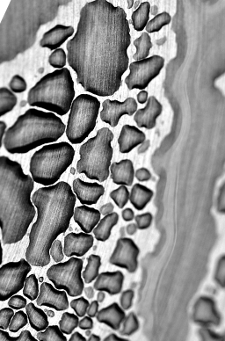Cheap fix for water split could yield new power
 A new technique may bring a totally renewable reality a little bit closer, improving the ways electricity from wind and solar can be stored.
A new technique may bring a totally renewable reality a little bit closer, improving the ways electricity from wind and solar can be stored.
A better way of separating oxygen and hydrogen into a usable fuel could plug the gaps where renewable sources fail.
Now, new developments have been able to split water by using far cheaper and more common materials than ever before.
The inability of wind and solar energy systems to provide energy when it is dark or not windy means they need some solidarity if they want to replace the more consistent, traditional coal and gas-based approach.
Swiss scientists have published a report on their new way to split oxygen and hydrogen, which can then be stored in the form of hydrogen fuel. This system, if powered from a renewable source, could provide a constant source of electricity with the capacity to deal with peak demands.
Hydrogen fuel has been around for some time, but the method described by a research team from Ecole Polytechnique Fédérale de Lausanne (EPFL) uses materials that are cheap, abundant, and have 10% solar-to-hydrogen conversion efficiency. They hope to create a high-efficiency, scalable solar water splitting device using common materials.
The Swiss team are using solar energy to break water molecules into hydrogen and oxygen through a process called “hydrogen evolution reaction”. Normally this process require platinum as catalyst among other rare and expensive materials.
One EPFL group has developed a molybdenum-sulfide catalyst for the hydrogen evolution reaction, which has combined with another group using copper oxide as a photocathode.
The researchers found that the molybdenum sulfide can be deposited on the copper oxide photocathode for use in photoelectrochemical water splitting through a simple deposition process that can be easily expanded onto a large scale.
The technique shows similar efficiency to other hydrogen evolution reaction catalysts including platinum.
It preserves the optical transparency for the light-harvesting surface and shows improved stability under acidic conditions, which could mean less maintenance. More importantly, both the catalyst and the photocathode are made with cheap, earth-abundant materials that could greatly reduce the cost of water-splitting devices in the future.
According to senior author Xile Hu, the work represents a state-of-the-art example for solar hydrogen production devices. More information is accessible in the full report.








 Print
Print